6 Best Telephoto Lenses in 2020
A telephoto lens is an essential part of any photographer’s toolkit, whether they’re an amateur or seasoned pro. Telephoto lenses allow you to step back from your subject and snap pictures at a distance both of you find comfortable. They’re the go-to choice for portraits, sports, wildlife, and event photography but can perform well for cityscapes and macro work, too.
High focal lengths allow telephoto lenses to zoom in on subjects and frame them in a way that makes far-away backgrounds appear closer than they really are. They also excel at creating a shallow depth of field where the subject is tack-sharp while the area in front and behind is blurry. This is especially useful for portraits and pictures of animals as it eliminates all distractions.
These are the six best telephoto lenses you can get today. We’ve included models compatible with everything from full-frame to MTF systems, as well as more affordable alternatives to the world’s top glass. Decide which suits you the most and instantly improve the quality of your art.
| Budget |
|---|
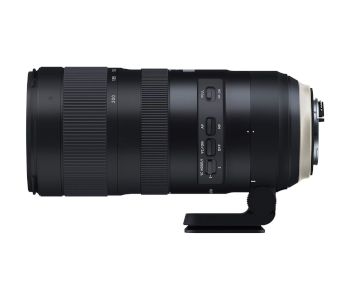 |
| Tamron SP 70-200mm F/2.8 Di VC G2 |
| 4.5/5.0 |
| Minimum focus distance: 3.1’ |
| Image stabilization: Yes |
| Versatile and effective image stabilization. |
| Check Amazon |
| Best Value |
|---|
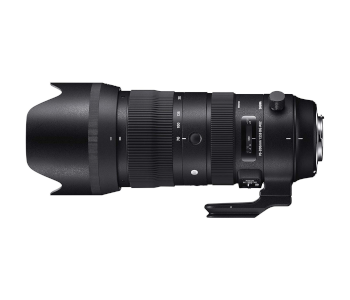 |
| Sigma 70-200mm F2.8 Sports DG OS HSM |
| 4.6/5.0 |
| Minimum focus distance: 3.9’ |
| Image stabilization: Yes |
| Beautiful bokeh, even at narrow apertures. |
| Check Amazon |
| Top Pick |
|---|
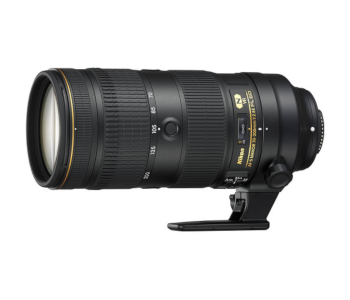 |
| Nikon AF-S NIKKOR 70-200mm f/2.8E FL ED VR |
| 4.8/5.0 |
| Minimum focus distance: 3.6’ |
| Image stabilization: Yes |
| Exceptionally fast and accurate autofocus. |
| Check B&H |
Telephoto Lenses Comparison Table
| Image | Product | Overall Rating | Image quality | Build quality | Features | Price |
|---|---|---|---|---|---|---|
 | Nikon AF-S NIKKOR 70-200mm f/2.8E FL ED VR | 4.8 | 4.9 | 4.8 | 4.8 | Check Price |
 | Sigma 70-200mm F2.8 Sports DG OS HSM | 4.6 | 4.5 | 4.6 | 4.6 | Check Price |
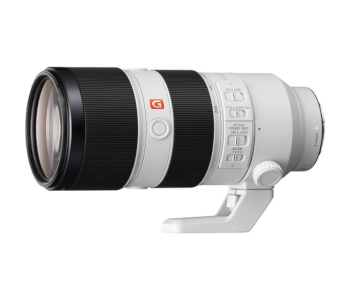 | Sony FE 70-200mm f/2.8 GM OSS | 4.7 | 4.8 | 4.7 | 4.6 | Check Price |
 | Canon EF 70-200mm f/2.8L IS III USM | 4.7 | 4.7 | 4.6 | 4.7 | Check Price |
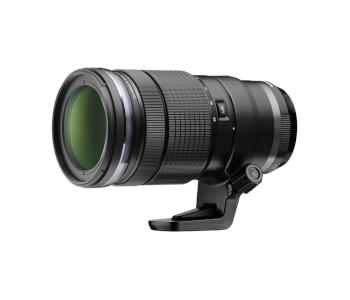 | Olympus M.Zuiko Digital ED 40-150mm F2.8 PRO | 4.6 | 4.7 | 4.5 | 4.7 | Check Price |
 | Tamron SP 70-200mm F/2.8 Di VC G2 | 4.5 | 4.4 | 4.6 | 4.5 | Check Price |
1. Best Overall – Nikon AF-S NIKKOR 70-200mm f/2.8E FL ED VR
Editor’s Rating: 4.8/5
Nikon users are fortunate as the 70-200mm f/2.8E FL ED VR embodies everything an outstanding telephoto lens ought to be. It’s razor-sharp, lightning-fast, and optically balanced to the point that any objections we can raise about its quality are minor nuisances. It’s a stellar performer whether you’re shooting a wedding ceremony or hyperactive wildlife.
Overview of Features
The 70-200mm f/2.8E FL ED VR is part of the Nikkor family of premium-grade lenses, as evidenced by its gold ring and excellent build quality. It’s long and heavy, which isn’t a surprise as 22 elements in 16 groups balance picture quality with flare and aberration resistance. The collar has a removable mount, and you get a reversible hood for even better performance in harsh sunlight.
Nikon’s engineers have outdone themselves with the 70-200mm f/2.8E FL ED VR’s autofocus. It’s the fastest lens the company has ever produced, locking on to subjects in a heartbeat and not letting them escape focus no matter how fidgety or unpredictable their movements. You can improve handheld results by switching to either normal or sports-oriented image stabilization. Additionally, you can make manual adjustments to the autofocus in continuous and single modes, depending on whether the AF switch is in A/M or M/A mode.
The 70-200mm f/2.8E FL ED VR’s sharpness is exceptional. Its “worst” showing is at 70mm f/2.8 where the corners are a step below its world-class center sharpness. Stick to f/8 or f/11 at that focal length for best results but feel free to use even f/22 as the dip in quality isn’t enough to make the lens soft. Best of all, the lens shows no signs of reduced quality at 200mm, a plight many lesser telephotos can’t seem to overcome.
Focus breathing was an issue for the 70-200mm f/2.8E FL ED VR’s predecessor that’s no longer present. Nano Crystal Coating reduces the number of artifacts to the point that none will show up unless you’re shooting into the sun. A constant high max aperture means you’ll get beautiful backgrounds with creamy bokeh that tastefully paint the subject as the center of attention. Finally, chromatic aberration isn’t absent, but it’s controlled much better than on the older model.
What We Didn’t Like
The 70-200mm f/2.8E FL ED VR shows small amounts of pincushion distortion that become moderate towards 200mm. There’s also some vignetting at f/2.8 that’s most noticeable when you zoom in completely. Both issues can be cleaned up in post and don’t detract from the lens’s superb overall performance.
| Tech Specs |
|---|
| Dimensions: 3.5 x 3.5 x 8” |
| Weight: 3.2 lbs |
| Minimum focal length: 70mm |
| Maximum focal length: 200mm |
| Maximum aperture: f/2.8 |
| Minimum aperture: f/22 |
| Minimum focus distance: 3.6’ |
| Angle of view: 34° 20′ to 12° 20′ |
| Image stabilization: Yes |
| Pros |
|---|
| World-class sharpness |
| Exceptionally fast and accurate autofocus |
| Effective image stabilization |
| No focus breathing or flaring issues |
| Cons |
|---|
| Moderate pincushion distortion |
| Pronounced vignetting at 200m f/2.8 |
2. Best Value – Sigma 70-200mm F2.8 Sports DG OS HSM
Editor’s Rating: 4.6/5
Sigma’s 70-200mm F2.8 Sports DG OS HSM is proof that a top-quality lens can cost 50 percent less than leading first-party models and still produce comparable results. It’s a large and bulky lens that makes up for that with exemplary weather sealing and a multitude of focusing options. Add to that a sharp output & great optics, and you’ve got a deal that sounds too good to be true.
Overview of Features
Sigma has pulled out all the stops when designing the 70-200mm F2.8 Sports DG OS HSM. It’s a lens built for decades-long use with a magnesium alloy body and brass mount. Everything is put together tightly and sealed against the elements. Fluorite and low dispersion glass keeps flares and CA low while coating similar to fluorine repels dust and moisture from the outer-most lenses.
The hyper Sonic Motor is slightly slower than Nikon’s, but Sigma’s telephoto is still a fast performer. It doesn’t hunt or slow down in low light, and you can engage the focus limiter to speed it up further if you’re sure that a subject is more than ten feet away. You can toggle between three focus modes and assign focus hold positions to one of four buttons located between the focus and zoom rings. Vibration reduction is effective for four stops of image stabilization and indispensable for handheld shooting and long exposures.
Sharpness reveals the most significant difference in quality between the 70-200mm F2.8 Sports DG OS HSM and original lenses. Expect the best results at 70mm, where the lens is outstanding from the get-go and climbs higher until it reaches peak performance between f/8 and f/11. Zooming in to 135mm results in a decrease in quality but also provides more uniform results. The same is true for f/200, where the sharpness holds between f/4 and f/8.
Slight barrel distortion at 70mm gives way to moderate pincushion distortion at 135mm and beyond and isn’t an issue. The lens excels at creating smooth background transitions and produces round bokeh even at narrow apertures thanks to eleven rounded blades. You’ll see some chromatic aberration in the corners at high apertures if you get the Nikon variant. Canon users won’t have this issue.
What’s Bad About It?
The 70-200mm F2.8 Sports DG OS HSM is a heavy lens you’ll probably pair with a full-frame DSLR or mirrorless camera. That’s bound to take a toll, especially during long shoots where you have to relocate frequently. There’s close to three stops of vignetting at f/2.8 regardless of focal length. It’s much less pronounced at f/4 and onward, though.
| Tech Specs |
|---|
| Dimensions: 3.8 x 3.8 x 8” |
| Weight: 4 lbs |
| Available for: Canon, Nikon, Sigma |
| Minimum focal length: 70mm |
| Maximum focal length: 200mm |
| Maximum aperture: f/2.8 |
| Minimum aperture: f/22 |
| Minimum focus distance: 3.9’ |
| Angle of view: 34.2° to 12.3° |
| Image stabilization: Yes |
| Pros |
|---|
| Excellent value for the money |
| Superb build quality and weather sealing |
| Quick and adjustable autofocus |
| Beautiful bokeh, even at narrow apertures |
| Cons |
|---|
| Heavy |
| Some vignetting at f/2.8 |
3. Sony FE 70-200mm f/2.8 GM OSS
Editor’s Rating: 4.7/5
Sony mirrorless camera users shouldn’t feel bad about Nikon’s top spot on our list as the differences between the winner and the 70-200mm f/2.8 GM OSS are minimal. It’s a remarkably sharp lens with few, if any, issues that works wonders for event, portrait, and short-distance sports or wildlife photography. It’s built like a tank and ensures that every shot you take is a keeper.
Overview of Features
Even though it’s almost the same size as Nikon’s lens, the 70-200mm f/2.8 GM OSS dwarfs the mirrorless cameras it supports. It’s part of the G Master series of flagship Sony lenses, and you’ll see this in the build quality, weather sealing, and general responsiveness as soon as you start shooting with it. The zoom and focus rings offer ideal resistance levels, while the switches and focus hold buttons allow for precise control of its behavior.
Sony used a pair of motors and a floating system to outfit the 70-200mm f/2.8 GM OSS with an exceptionally accurate and silent autofocus experience. Focus variation is absent, meaning you’ll get consistently sharp results whether you’re focusing from its minimal distance or infinity. OSS offers four stops of image stabilization, and you can engage the focus limiter switch to improve the lens’s acquisition speed.
We were impressed with the 70-200mm f/2.8 GM OSS’s ability to maintain sharpness. Results are already excellent at 70mm f/2.8 as the corners are only slightly weaker than the center and even out with it as you step down to f/4. Zooming to 135mm lowers the overall resolution but leads to uniform sharpness. The lens maintains outstanding central sharpness at 200mm. The corners are comparably soft yet recover by f/4.
The 70-200mm f/2.8 GM OSS has some of the best bokeh on review. Background highlights are rendered without imperfections like onion rings or harsh edges, and you can pull them off at lower apertures thanks to an eleven-bladed diaphragm. Longitudinal chromatic aberration is preset only at max aperture in shots with extreme contrasts, and vignetting is controlled well for a telephoto lens.
Are There Drawbacks?
The 70-200mm f/2.8 GM OSS is prone to focus breathing. You’ll want to determine which aperture to use first and then acquire focus, or else your subjects might become blurry. There’s moderate barrel distortion at 70mm you can correct in Lightroom.
| Tech Specs |
|---|
| Dimensions: 3.5 x 3.5 x 7.8” |
| Weight: 3.2 lbs |
| Minimum focal length: 70mm |
| Maximum focal length: 200mm |
| Maximum aperture: f/2.8 |
| Minimum aperture: f/22 |
| Minimum focus distance: 3.2’ |
| Angle of view: 34° to 12° 30′ |
| Image stabilization: Yes |
| Pros |
|---|
| Outstanding build quality and weather sealing |
| Consistently accurate and quiet autofocus |
| Maintains excellent central sharpness throughout its focal range |
| Controlled LoCA and vignetting |
| Cons |
|---|
| Prone to focus breathing |
| Moderate barrel distortion at 70mm |
4. Canon EF 70-200mm f/2.8L IS III USM
Editor’s Rating: 4.7/5
The 70-200mm f/2.8L IS III USM is a refresh of one of Canon’s most successful lenses to date. It brings several quality-of-life upgrades such as fluorine coating and a few performance updates that deliver a nearly flawless shooting experience. Best of all, you can use the lens both with Canon’s digital SLR cameras and the EOS R mirrorless series via an adapter.
Overview of Features
There’s little difference between the outward appearances of the 70-200mm f/2.8L IS III USM and its predecessor, apart from a cooler shade of white. It’s still a superbly constructed lens with a removable tripod collar, comprehensive weather sealing, and rubberized rings with the right amount of give. The new fluorine coating applied to both external glass elements repels grind and dust, protecting them from fingerprints and making them easier to clean.
The Ultra Sonic Motor is aptly named since the 70-200mm f/2.8L IS III USM’s autofocus is quiet enough for video work. It’s also one of the quickest on review, taking a tenth of a second to deliver clean images of even the most demanding subjects. The limiter can be set to cover 2.5m to infinity. Image stabilization accounts for 3.5 stops and can be set to either normal or sports mode, the latter being useful when you’re dealing with moving subjects and have to compensate for panning.
The 70-200mm f/2.8L IS III USM is the most impressive lens on review when it comes to sharpness at 70mm. Its resolution is exemplary from corner to corner, starting at f/2.8 and only gets better until you reach f/5.6. Zooming in to 100mm even increases central sharpness while the edges and corners maintain 70mm levels. Only at 135mm and onward does the quality begin to suffer marginally as the gap between the corners and center widens. It’s a shame that diffraction starts to set in as early as f/8, else this would easily have been our overall winner.
Chromatic aberration is handled very well and practically absent at 135mm. Barrel and pincushion distortion are minimal and don’t need to be corrected for if you aren’t shooting architecture. You may include the sun in backlit shots as the lens’s flare resistance is impressive. Bokeh and background blur are among the finest we’ve seen as well.
What We Didn’t Like
The 70-200mm f/2.8L IS III USM is another lens with vignetting issues at max apertures. The corners are three stops darker than the center, so you’ll need to narrow the aperture or artificially brighten them during post. This isn’t the most expensive lens on the list, but it’s not as good a value as others since its predecessor is much cheaper while being only slightly worse.
| Tech Specs |
|---|
| Dimensions: 3.5 x 3.5 x 7.8” |
| Weight: 3.3 lbs |
| Minimum focal length: 70mm |
| Maximum focal length: 200mm |
| Maximum aperture: f/2.8 |
| Minimum aperture: f/32 |
| Minimum focus distance: 3.9’ |
| Angle of view: 34° to 12° |
| Image stabilization: Yes |
| Pros |
|---|
| Exceptional sharpness at 70mm |
| Great build quality and smudge protection |
| Fast autofocus |
| Balanced optical properties |
| Cons |
|---|
| Not the best value |
| Strong vignetting at f/2.8 |
5. Olympus M.Zuiko Digital ED 40-150mm F2.8 PRO
Editor’s Rating: 4.6/5
The telephoto lenses we’ve reviewed so far are compatible with full-frame and APS-C cameras, but what if you have a micro four-thirds model by Olympus or Panasonic? In that case, the ED 40-150mm F2.8 PRO M.Zuiko from Olympus is undoubtedly your best option. It’s remarkably sharp, as close to optical perfection as any telephoto we’ve reviewed, and comes with impressive features like an innovative lens hood.
Overview of Features
The ED 40-150mm F2.8 PRO is smaller than other lenses on review but still dwarfs compatible cameras. Its barrel is a mix of metal and high-quality plastic with a grommeted metal mount and 72mm filter thread that doesn’t rotate during focus. You also get an innovative hood that snaps into place towards the back of the barrel’s front. That way, you can keep it mounted without impacting the lens’s length and extend the hood at a moment’s notice.
Autofocus reaches SLR lens levels of speed and accuracy, which is impressive for a micro four-thirds lens. It will get confused if you keep face detection on and start taking pictures of non-human subjects, so remember to turn the setting off beforehand.
Manual focusing is possible by pulling the front of the barrel backward. This causes the focus ring to override any camera input and reveals a distance scale. The ring is easy to grip and has hard stops at 2.3 feet and infinity. The close focus distance and narrow max focal length allow the ED 40-150mm F2.8 PRO to double as a macro lens that projects subjects at 1:2.3 magnification.
The ED 40-150mm F2.8 PRO isn’t off to a brilliant start in terms of sharpness. The center is consistently excellent at 40mm, but there’s a wide gap between it and the corners, That gap is smallest at f/8 but never closes. Based on this, zooming to 70mm might cause you to do a double-take as the lens suddenly becomes razor-sharp and even. This uniformity persists throughout the rest of its focal range, with a minor drop in overall resolution. Impressive!
Speaking of outstanding results, the ED 40-150mm F2.8 PRO is optically the most well-rounded lens on review. There’s barely any distortion or color fringing, and flare resistance is superb. Even vignetting – the bane of telephoto zooms – is kept in check and never exceeds 1.5 stops. Bokeh is pleasant to look at, and you can achieve great-looking shallow depth of field with close subjects.
What’s Bad About It?
The ED 40-150mm F2.8 PRO lacks image stabilization. That’s not a problem for Olympus users as their cameras already have it built-in. Panasonic owners aren’t as lucky since their selection of stabilized cameras is limited. MFT users are price-conscious and might not be willing to pay considerably more for one telephoto lens than their camera.
| Tech Specs |
|---|
| Dimensions: 3.1 x 3.1 x 6.3” |
| Weight: 1.7 lbs |
| Minimum focal length: 40mm |
| Maximum focal length: 150mm |
| Maximum aperture: f/2.8 |
| Minimum aperture: f/22 |
| Minimum focus distance: 2.3’ |
| Angle of view: 30° to 8.2° |
| Image stabilization: No |
| Pros |
|---|
| No major optical issues |
| Consistently sharp after some hiccups at 40mm |
| Premium build quality and unique lens hood |
| Can work as a macro lens |
| Cons |
|---|
| Expensive considering the system it’s designed for |
| Lack of image stabilization is problematic for Panasonic users |
6. Best Budget Option – Tamron SP 70-200mm F/2.8 Di VC G2
Editor’s Rating: 4.5/5
Our thrifty telephoto pick is another third-party lens, this time from Tamron. The SP 70-200mm F/2.8 Di VC G2 offers comparable performance to Nikon and Canon originals at a much lower price. It’s not without its faults, but you’ll only notice those if you’re picky or certain weather conditions are met. If you don’t fancy dishing out $2,000 for prime glass but still want jaw-dropping results, this is the lens to get.
Overview of Features
Nothing about the SP 70-200mm F/2.8 Di VC G2’s look suggests it’s in a lower price bracket than the Canon or Nikon lenses we’ve reviewed. Its barrel is metal, the front-most element is coated with fluorine, and weather sealing keeps the lens safe from dust and splashes. Its glass array is composed of 23 pieces in 17 groups, many of them aspherical and low dispersion to limit chromatic aberration and make the image sharper.
Tamron’s engineers paid particular attention to the SP 70-200mm F/2.8 Di VC G2’s image stabilization. You control it via two switches – one for turning stabilization on or off, and another that cycles between three modes. The first two are similar to settings seen on other lenses and used for everyday situations and quick panning, respectively. The third mode pushes stabilization to an impressive five stops but doesn’t work whoče you’re previewing a shot. The Ultrasonic Silent Drive provides quiet autofocus that quickly springs to action. You can override it at any time by turning the focus wheel.
The SP 70-200mm F/2.8 Di VC G2’s sharpness makes a great first impression. It captures even, high-resolution images at 70mm, even at f/2.8. Stepping down improves the already excellent quality only slightly before starting to dip at f/11 and lower. Switching to 100mm nets sharper results the lens is able to maintain at 15mm too. Zooming in all the way is a different matter, though.
The lens creates soft and dreamy background blur that successfully isolates the subject. Bokeh isn’t bad either as the highlights have a uniform appearance. Distortion is present but manageable, and the same can be said about chromatic aberration.
Are There Drawbacks?
The SP 70-200mm F/2.8 Di VC G2 is significantly softer at 200mm than at other focal lengths. It’s also susceptible to veiling flare and artifacts, so take care to shoot away from the sun. Lastly, it exhibits vignetting on par with Canon’s telephoto.
| Tech Specs |
|---|
| Dimensions: 3.5 x 3.5 x 7.6” |
| Weight: 3.3 lbs |
| Available for: Canon, Nikon |
| Minimum focal length: 70mm |
| Maximum focal length: 200mm |
| Maximum aperture: f/2.8 |
| Minimum aperture: f/22 |
| Minimum focus distance: 3.1’ |
| Angle of view: 34° 21′ to 12° 21′ |
| Image stabilization: Yes |
| Pros |
|---|
| Almost the equal of top-tier original lenses at a much lower price |
| Exceptionally sharp throughout most of its focal range |
| Versatile and effective image stabilization |
| Creates beautiful bokeh and blurry backgrounds |
| Cons |
|---|
| Significantly less sharp at 200mm |
| Pronounced vignetting at f/2.8 |
| Suffers from veiling flare |
Contents
- Telephoto Lenses Comparison Table
- 1. Best Overall – Nikon AF-S NIKKOR 70-200mm f/2.8E FL ED VR
- Overview of Features
- What We Didn’t Like
- 2. Best Value – Sigma 70-200mm F2.8 Sports DG OS HSM
- Overview of Features
- What’s Bad About It?
- 3. Sony FE 70-200mm f/2.8 GM OSS
- Overview of Features
- Are There Drawbacks?
- 4. Canon EF 70-200mm f/2.8L IS III USM
- Overview of Features
- What We Didn’t Like
- 5. Olympus M.Zuiko Digital ED 40-150mm F2.8 PRO
- Overview of Features
- What’s Bad About It?
- 6. Best Budget Option – Tamron SP 70-200mm F/2.8 Di VC G2
- Overview of Features
- Are There Drawbacks?

